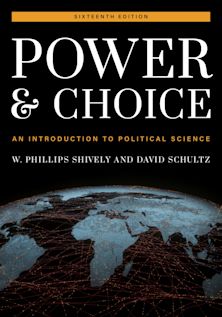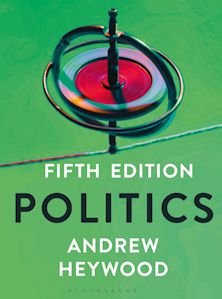- Home
- ACADEMIC
- Politics & International Relations
- Introduction to Politics
- Polarization and Political Party Factions in the 2020 Election
Polarization and Political Party Factions in the 2020 Election
Jennifer C. Lucas (Anthology Editor) , Christopher J. Galdieri (Anthology Editor) , Tauna Starbuck Sisco (Anthology Editor) , Zachary Albert (Contributor) , Brian K. Arbour (Contributor) , Kevin K. Banda (Contributor) , Todd L. Belt (Contributor) , Robert G. Boatright (Contributor) , Mark D. Brewer (Contributor) , Christopher Chapp (Contributor) , John Cluverius (Contributor) , Jerome Day (Contributor) , Christopher J. Galdieri (Contributor) , J. Scott Granberg-Rademacker (Contributor) , Jorge Esparza Hernandez (Contributor) , Whitney Hua (Contributor) , Natalie Jackson (Contributor) , Chad Kinsella (Contributor) , Michael S. Lewis-Beck (Contributor) , Jennifer C. Lucas (Contributor) , Lilliana Mason (Contributor) , Hans Noel (Contributor) , Kevin Parsneau (Contributor) , Richard J. Powell (Contributor) , Carly Schmitt (Contributor) , Tauna S. Sisco (Contributor)
Polarization and Political Party Factions in the 2020 Election
Jennifer C. Lucas (Anthology Editor) , Christopher J. Galdieri (Anthology Editor) , Tauna Starbuck Sisco (Anthology Editor) , Zachary Albert (Contributor) , Brian K. Arbour (Contributor) , Kevin K. Banda (Contributor) , Todd L. Belt (Contributor) , Robert G. Boatright (Contributor) , Mark D. Brewer (Contributor) , Christopher Chapp (Contributor) , John Cluverius (Contributor) , Jerome Day (Contributor) , Christopher J. Galdieri (Contributor) , J. Scott Granberg-Rademacker (Contributor) , Jorge Esparza Hernandez (Contributor) , Whitney Hua (Contributor) , Natalie Jackson (Contributor) , Chad Kinsella (Contributor) , Michael S. Lewis-Beck (Contributor) , Jennifer C. Lucas (Contributor) , Lilliana Mason (Contributor) , Hans Noel (Contributor) , Kevin Parsneau (Contributor) , Richard J. Powell (Contributor) , Carly Schmitt (Contributor) , Tauna S. Sisco (Contributor)
You must sign in to add this item to your wishlist. Please sign in or create an account
Description
This volume explores the conflict between two forces: party polarization and party factionalism. The major change in America’s two political parties over the past half-century has been increased polarization, which has led to a new era of heightened inter-party competition resulting in stronger and more cohesive parties. At the same time, elections, particularly primaries, often reveal deep internal factional divisions within both the parties, and the 2020 election was no different. The Democratic coalition typically pits moderate or establishment candidates against progressive activists and candidates, while the Republican Party in 2020 was, at times, polarized not only between moderates and conservatives but between those willing to criticize President Trump and those who would not. How did these two opposing forces shape the outcome of the 2020 election, and what are the consequences for the future of American party politics and elections?
Table of Contents
Section I: Party Activists and Factions: Challenging the Party Establishment in 2020
Chapter 1: Social Media Activism and Party Polarization: Did Democratic Social Media Activists Influence the Outcome of the 2020 Presidential Election? by Todd L. Belt
Chapter 2: Persistent Factionalism? An Analysis of Endorsements in the 2020 Democratic Primary by Zachary Albert
Chapter 3: Honest Abe Rebukes 'The Donald': Rhetoric in The Lincoln Project by Jerome Day, O.S.B
Section II: Polarization and Party Competition in Congressional Elections
Chapter 4: Negative Partisanship and Negative Partisan Branding: Twitter, Websites, and the 2020 Congressional Elections by Whitney Hua, Christopher Chapp, and Jorge Esparza Hernandez
Chapter 5: What Do the 2020 Congressional Primaries Tell Us about the Direction of the Democratic Party? by Robert G. Boatright
Chapter 6: Twitter Use
Product details
| Published | 13 Apr 2022 |
|---|---|
| Format | Ebook (PDF) |
| Edition | 1st |
| Extent | 1 |
| ISBN | 9781978776401 |
| Imprint | Lexington Books |
| Illustrations | 12 b/w illustrations; 9 tables; |
| Publisher | Bloomsbury Publishing |
About the contributors
Reviews
-
This timely volume is a must read for students of both parties and elections. With contributions from some of the most respected scholars in the field, Polarization and Political Party Factions in the 2020 Election explores the nuances of both party competition and intraparty conflict in the U.S. In doing so, the book dissects important developments across the political landscape, including those pertaining to presidential and congressional primaries, online activism, access to the polls, campaign finance, ideological identities, and much more. The authors help make sense of a turbulent time in American politics, while also preparing readers for the issues and debates likely to dominate in the coming years.
Elliott Fullmer, Randolph-Macon College
-
Lucas, Galdieri, and Sisco have assembled a talented and creative group of scholars to address some of the most pressing questions about the 2020 election cycle. This book offers valuable new research on factional struggles within the major American political parties — from the on-line progressives seeking to pull the Democrats leftward to the Lincoln Project working to dislodge Trump from the GOP. The volume covers the impact of primaries, the challenges of polling, the struggles of election administration, and more. Students, scholars, and political observers will find a great many answers in these pages, along with creative suggestions for further inquiry.
Seth Masket, University of Denver
-
This volume brings together a set of scholars perfectly positioned to address key challenges of today’s American political system. The chapters excel in considering not just the partisan polarization that has grabbed a great deal of scholarly interest, but also the internal party dynamics of factionalism and cleavages many scholars have overlooked. Using the 2020 election as a lens, the research collected here informs our understanding of intra-party divisions as well as inter-party competition in an unsettled and unsettling era for American politics.
David P. Redlawsk, University of Delaware
-
Lucas, Galdieri, and Sisco have pulled together a fascinating volume that examines not only political polarization in the United States, but the connections and fissures between internal party factions. The 2020 Election is the focal point for the research, but much of the work in this book reaches backwards to explain how we arrived at this point, and what this factionalism and polarization means for the parties, their members, and the general electorate. Polarization and Political Party Factions in the 2020 Election emphasizes not just the parties, their internal struggles, and their battles with each other, but also integrates connected external factors, like social media, advertising, branding, and polling.
Lilly J. Goren, Carroll University

ONLINE RESOURCES
Bloomsbury Collections
This book is available on Bloomsbury Collections where your library has access.


































